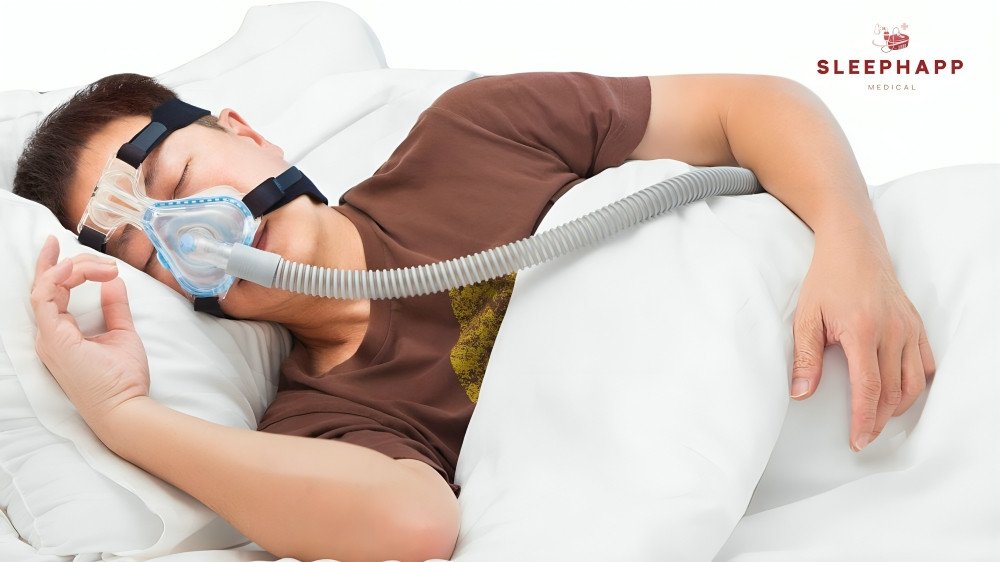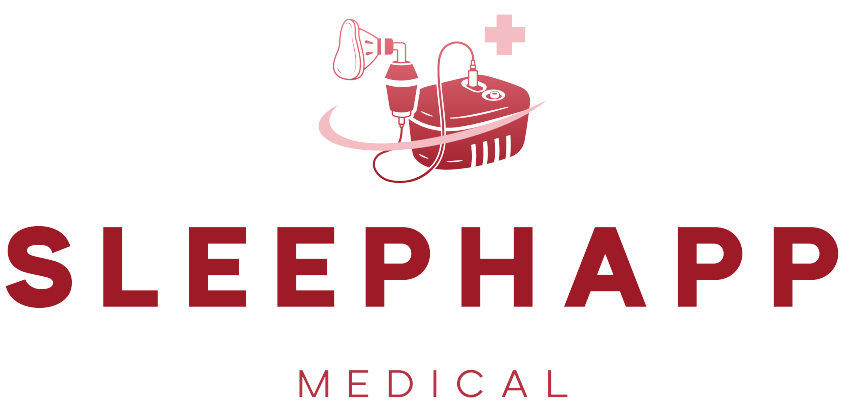Can APAP Devices Help Patients with Central Sleep Apnea?
Home » Can APAP Devices Help Patients with Central Sleep Apnea?

Table of Contents
Central Sleep Apnea (CSA) is a sleep problem. The brain does not send the right signals to breathing muscles. Obstructive Sleep Apnea (OSA) happens because the airway gets blocked. CSA is linked to brain and heart problems like strokes or heart failure.
APAP machines help people with OSA, but they may not work well for CSA. This article explains CSA, how APAP machines work, and if they can help CSA patients. It also looks at other treatments and how well they work.
What is Central Sleep Apnea (CSA)?
CSA happens when the brain sometimes forgets to tell the muscles to breathe. This causes short pauses in breathing during sleep. OSA happens because something blocks the airway. But CSA is caused by a problem in the brain. CSA is commonly associated with severe conditions like heart failure and brainstem injuries.
Symptoms of CSA
- Breathing Pauses During Sleep: CSA makes you stop breathing for seconds. This disrupts sleep.
- Frequent Nighttime Awakenings: Irregular breathing wakes you up many times. Sleep is not refreshing.
- Daytime Fatigue: Poor sleep causes sleepiness, trouble focusing, and low energy.
- Morning Headaches: Low oxygen and too much carbon dioxide cause headaches in the morning.
- Cognitive Issues: CSA affects memory, focus, and thinking speed. (Mayo Clinic – Central Sleep Apnea Symptoms).
Why is CSA Hard to Treat?
Treating CSA is more complex than treating OSA because the issue originates in the brain’s respiratory control center. Traditional pressure-based treatments like CPAP may not always be effective, as they do not address the underlying neurological cause. (National Institutes of Health – CSA Treatment Challenges).
What are APAP Devices?
Auto-adjusting Positive Airway Pressure (APAP) devices are designed to treat OSA by automatically adjusting air pressure in response to breathing patterns.
How APAP Works
- Monitors breathing patterns in real time.
- Adjusts air pressure automatically to maintain an open airway.
- Provides a personalized treatment experience by adapting to different sleep stages.
Comparing APAP with Other Devices
| Feature | APAP | CPAP | BiPAP |
| Pressure Delivery | Adjusts based on breathing needs | Delivers constant pressure | Two levels: inhale and exhale |
| Best For | Mixed apneas or mild CSA | OSA | Severe OSA, CSA, or other conditions |
| Comfort | Highly adaptive | Fixed pressure can feel restrictive | Easier to exhale |
| Complexity | Advanced with sensors | Simple, fixed settings | More complex, dual pressure levels |
Can APAP Help with CSA?
APAP devices automatically adjust airflow to provide optimal pressure levels. While they are effective for OSA, their benefits for CSA remain limited. APAP can improve sleep quality in mild CSA cases but does not address the core issue of disrupted brain signaling.
Benefits of APAP for CSA
- Auto-Adjusting Pressure: APAP devices adjust air pressure based on breathing patterns, ensuring optimal airflow and reducing apnea episodes.
- Better Comfort: APAP changes pressure to match your needs. It feels better than CPAP.
- Better Sleep: APAP helps you breathe better. This gives you deep, restful sleep.
- Works for Everyone: APAP adjusts to your breathing. It helps people with different needs.
- Quiet Machine: New APAP machines are very quiet. They won’t wake you up.
Limitations of APAP for CSA
- Not Designed for CSA: APAP is primarily for OSA and does not address the neurological cause of CSA.
- Pressure Sensitivity Issues: Automatic pressure adjustments may not correctly respond to CSA-related breathing problems.
- Uncomfortable Pressure Changes: APAP may increase pressure unnecessarily, causing discomfort.
- Not Effective for Severe CSA: More advanced therapies such as Adaptive Servo-Ventilation (ASV) are needed for complex CSA cases.
Alternative Treatments for CSA
Adaptive Servo-Ventilation (ASV)
ASV dynamically adjusts airflow to stabilize breathing patterns and is often more effective than CPAP and APAP for CSA.
Supplemental Oxygen Therapy
This therapy increases oxygen levels during sleep and reduces the impact of apnea episodes.
Medications and Lifestyle Changes
- Acetazolamide: A medicine that helps with breathing.
- Healthy habits: Lose weight, exercise, and avoid sedatives to manage CSA.
Bilevel Positive Airway Pressure (BiPAP)
- BiPAP gives different air pressures for breathing in and out.
- It works better for CSA than APAP.
Phrenic Nerve Stimulation
- A small device is put inside the body.
- It helps the diaphragm move for better breathing.
- Used for severe CSA cases.
When to Use APAP for CSA?
APAP may be considered for patients with mild CSA or those with a combination of CSA and OSA. However, a sleep specialist should evaluate its suitability and monitor progress. Combining APAP with other therapies may provide better results.
Conclusion
APAP devices are highly effective for OSA but have limited benefits for CSA. They can help in mild cases or when CSA coexists with OSA. However, for severe CSA, treatments such as ASV, BiPAP, and phrenic nerve stimulation are more effective. Consulting a sleep specialist is crucial for determining the best treatment.
At Sleephapp, we provide personalized care tailored to your needs. Our expert team ensures you receive the most effective therapy to improve your sleep health and overall well-being.
Sources:
- https://pmc.ncbi.nlm.nih.gov/articles/PMC4549693/
- https://sleepdoctor.com/sleep-apnea
- https://www.mayoclinic.org/diseases-conditions/central-sleep-apnea/symptoms-causes/syc-20352109
- https://me.resmed.com/professionals/sleep-apnoea/treatment-options-for-csa/
- https://www.medicalnewstoday.com/articles/central-sleep-apnea
- https://emedicine.medscape.com/article/304967-treatment
